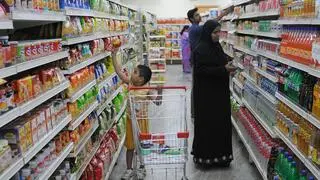The ₹70,000 crore paints industry is set for a shakeup with large conglomerates such as Aditya Birla Group, JSW Group, JK Group and Pidilite Industries brushing their way into a territory dominated by Asian Paints and Berger Paints.
While the paints market has high entry barriers which has led to a number of exits in the past, the new players have the advantage of financial muscle and presence in allied businesses.
Donning the Warpaint
The new players are eyeing a big canvas. Aditya Birla group’s flagship Grasim Industries is gearing up for a no-holds-barred battle with a capex of ₹10,000 crore. Grasim has chosen Panipat in Haryana to put up its first paint plant that will go on stream by next March.
Kumar Mangalam Birla, Chairman, Aditya Birla Group, says the foray into paints is a strategic portfolio choice for Grasim as it looks to identify new growth engines. Birla is targeting nothing short of a leadership position in the paints market.
Similarly, JSW Paints, part of the JSW Group, is eyeing a capex of ₹750-1,000 crore over the next 2-3 years as it looks to up production capacities by 2 lakh kilo litres (kl) per annum and a plan to corner a market share of 8-10 per cent over the next three years.
JK Cement has fast forwarded its paint venture by acquiring 60 per cent stake in Acro Paints for ₹ 153 crore and will acquire the remaining 40 per cent stake in the next one year. It has rebranded Acro Paints as JKMaxx Paints and has rolled out the products in North and Central India. It has a production capacity of 60,000 kl in decorative paints and 6,700 kl in construction chemicals. Acro also had over 3,000 SKUs (stock keeping units).
Pidilite soft-launched Haisha decorative paints in Andhra Pradesh, Telangana and Odisha. The producer of Dr Fixit waterproofing coatings, wants to gauge the response for 3-6 months before making any new investments.
Even smaller players such as Walplast Products, a building materials company, has launched its decorative paint brand, Homesure Mastertouch.
Kaushal Mehta, Managing Director, Walplast Products, said there are over 350 (regional and local) players who vie for a slice of the paints revenue pie and there is enough space for everyone to co-exist.
MARGIN SQUEEZE
The decorative paints business, which so far had only a few players, is growing at a CAGR of 10-12 per cent. The reigning giants are sketching out their own strategies to hold their fort.
Abhijit Roy, Managing Director, Berger Paints, said some erosion of margins is inevitable with new entrants investing aggressively to carve out some market share for themselves. At the end, the better managed companies will be making plans to minimise the impact of the impending dog-fight, he said.
The new entrants will attempt to push their products through dealers by offering higher discounts and other promotions besides wooing painters with special incentives. The move is expected hit profitability of the industry players in the near to medium terms.
The issue is exacerbated by small-to mid-sized players who are also eyeing the opportunity and may adopt a regional strategy.
AS Sundaresan, Joint MD and CEO, JSW Paints, said the demand in the first half of last fiscal was muted with the market absorbing the steep price increases and an extended monsoon, but there was strong bounce back thereafter particularly in the March quarter.
“Overall growth in value terms of industry is in mid-teens owing to steep price increases in the second half of FY22. Volume growth is led by value and economy categories. We expect a double-digit demand growth in this fiscal with a long Diwali season and normal monsoon while prices may remain stable,” he added.
CAPACITY ADDITION
Over the next two to three years, the paint industry is expected to increase capacity by 25 per cent. The industry is expected see an investment of ₹22,000 crore with Grasim alone investing 50 per cent of planned capex. Asian Paints will also invest close to ₹10,000 crore to increase its capacity by 50 per cent.
Asian Paints has a production capacity of 1,700 million litre per annum, while that of Kansai Nerolac Paints, JSW Paints and Indigo Paints are at 583 MLPA, 125 MLPA and 110 MLPA.
With the delayed monsoon and higher trade discounts, the sales volume growth was aided by the recent price cuts. Demand for exterior paints generally dries up after the south-west monsoon start.
Anuj Sethi, Senior Director, Crisil Ratings, said the industry is expected to continue its growth momentum of 10-12 per cent per annum over the medium term, driven by thrust on affordable housing, shorter re-painting cycles and up-trading by existing customers, among others.
As a thumb rule, he said the paint segment grows at 1.5 times the GDP growth. This provides enough scope for new market entrants to establish their presence without necessarily impacting the current pecking order, he said.
“Hence, a new entrant with strong financial flexibility and pan-India dealer network in allied products may largely capture more share of the still largely unorganised segment,” Sethi said.







Comments
Comments have to be in English, and in full sentences. They cannot be abusive or personal. Please abide by our community guidelines for posting your comments.
We have migrated to a new commenting platform. If you are already a registered user of TheHindu Businessline and logged in, you may continue to engage with our articles. If you do not have an account please register and login to post comments. Users can access their older comments by logging into their accounts on Vuukle.